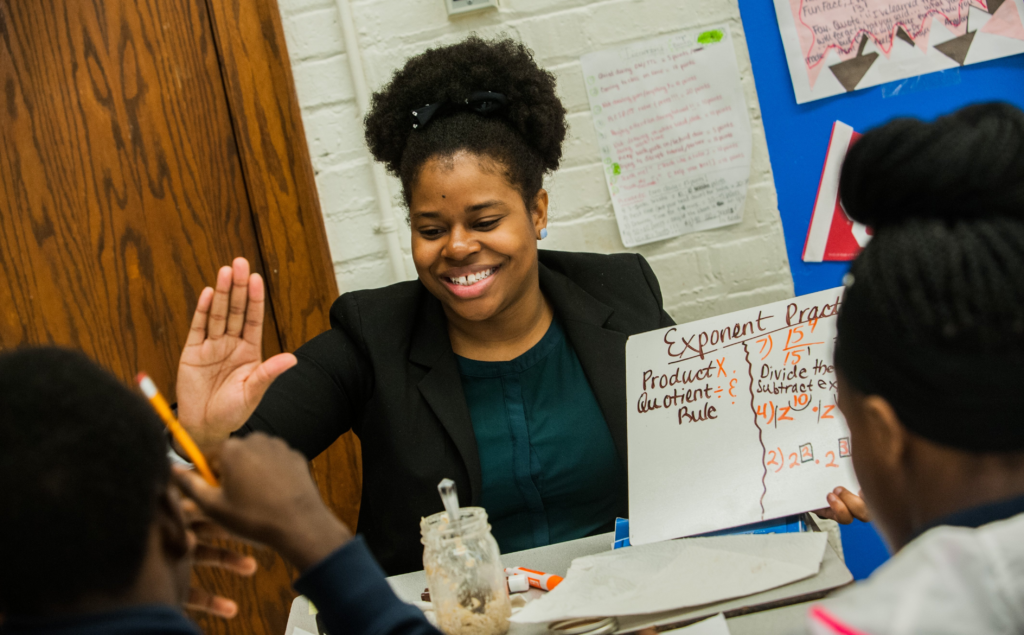Did you have an educator who really saw you and got to know you for who you are?
What was it like being in their class? How did they shape you as a person and as a student?
My guess is you had conversations about life outside of the classroom, the educator actively listened to you and they maybe even shared slivers of their own life with you.
When students feel unseen or overlooked by teachers, tutors, and paraprofessionals, a disconnect can begin to form between the student and the work before them. Positive relationships, however, can have a serious impact on academic success, can help form a sense of belonging to the learning community, and may even result in better teaching, too.
Relationship-building is essential but like many good things in life, it takes work. Establishing a meaningful relationship with students takes time. Once they’re established, nurturing those relationships over time requires patience and perseverance. But the benefits to both the educator and the student make all the effort worth it.
 The role of a tutor is significantly different from that of a teacher but both play a part in strengthening student well-being, confidence, and their sense of belonging in school. For more on building tutor-student relationships, check out the Three principles to build great student-tutor relationships: Relationships, Rigor and Ratio.
In this blog post, we’ll look at five ways to create and nurture meaningful relationships with students.
The role of a tutor is significantly different from that of a teacher but both play a part in strengthening student well-being, confidence, and their sense of belonging in school. For more on building tutor-student relationships, check out the Three principles to build great student-tutor relationships: Relationships, Rigor and Ratio.
In this blog post, we’ll look at five ways to create and nurture meaningful relationships with students.
 The role of a tutor is significantly different from that of a teacher but both play a part in strengthening student well-being, confidence, and their sense of belonging in school. For more on building tutor-student relationships, check out the Three principles to build great student-tutor relationships: Relationships, Rigor and Ratio.
In this blog post, we’ll look at five ways to create and nurture meaningful relationships with students.
The role of a tutor is significantly different from that of a teacher but both play a part in strengthening student well-being, confidence, and their sense of belonging in school. For more on building tutor-student relationships, check out the Three principles to build great student-tutor relationships: Relationships, Rigor and Ratio.
In this blog post, we’ll look at five ways to create and nurture meaningful relationships with students.
Five Ways to Create Meaningful Relationships with Students
1. Get to Know the Whole Child
Hopefully, you have a teacher that comes to mind when you read the opening question. Students, like all of us, crave connection. They know it when they are treated as a project to fix, a problem to solve, or a cog in the wheel. On the flip side, when they are treated like people first and students second, they are well aware of it. At the beginning of the relationship, do an interest survey to get to know what music, TV shows, apps, movies, extra-curricular activities, and hobbies your students enjoy. Finding small ways to connect is the building block to a strong, relational foundation in education. If you see that a student loves the same movie franchise as you or is learning to bake, ask a few follow-up questions before jumping into the content the next time you see them. In a few months, there may be a new season of their favorite show and you can ask if they have watched it yet and what they think about it. When you’ve got an inventory of student interests to refer back to over time, you have a way to inject personal conversations at every stage of the school year.2. Build Margin Into Your Day to Listen and Have Conversations
In order to get to know the whole child, you have to proactively build margin into your time with them to have personal conversations. If every period or session with the student is maxed out with academic content and you have to rush to get through everything, you may find yourself getting annoyed when things get off track. If, on the other hand, you know you’ve built in a few minutes to listen to what’s on their mind (whether it comes up because the student brings it up or because you ask,) you’re more likely to welcome a quick side conversation about their birthday plans or the new shoes they got this weekend.3. Incorporate the Student’s Voice Into the Work
When you know your students’ personal interests and hobbies, you’ve got a direct way to make the academic content more engaging.- You could write simple math problems using their favorite musical artists.
- You could create physics problems with basketball for students who love to play.
- You could find texts that have characters that look like, sound like, and live lives similar to those of your students.
